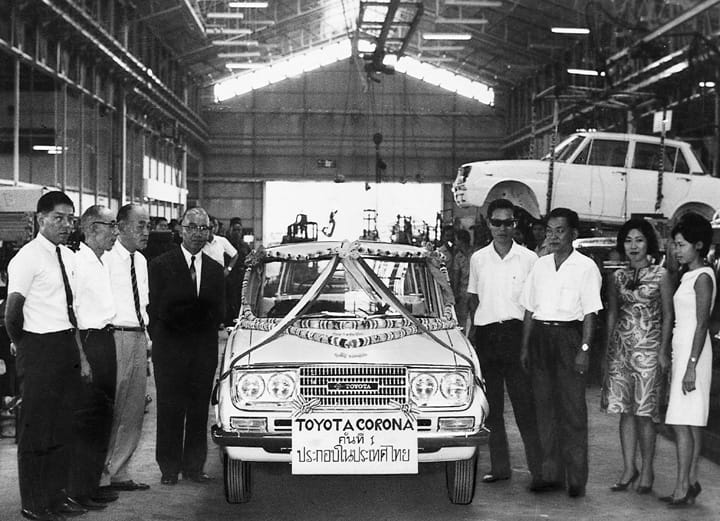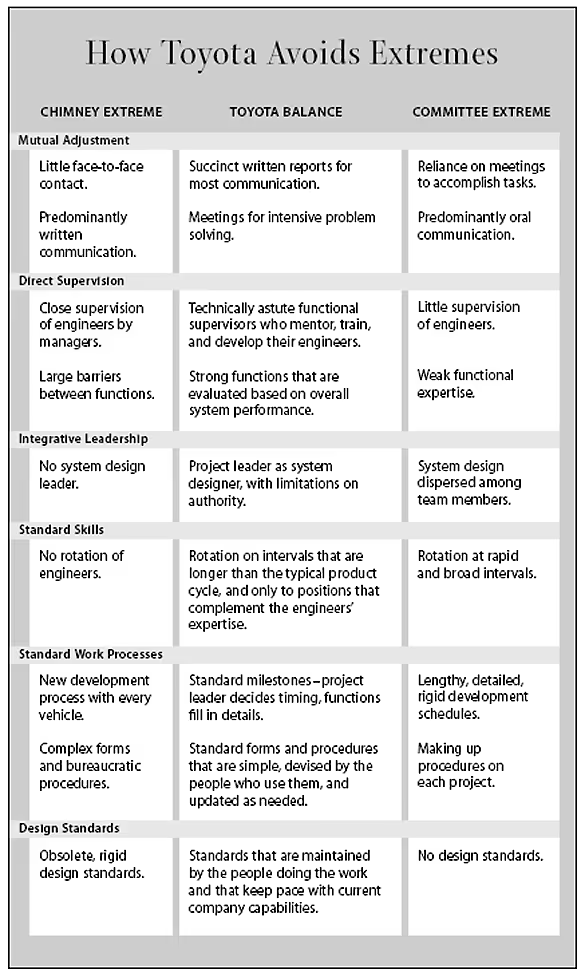Toyota

Toyota
Toyota's story is one of unlikely success. It began not with cars, but with looms. Sakichi Toyoda, the father of Toyota's founder, was a prolific inventor who created an automatic loom in 1924. His son, Kiichiro, saw the future in automobiles.
In 1933, Kiichiro started a small automotive department within his father's loom company. He had no experience building cars. Zero. But he was determined to learn.
"We can make better cars than the Americans," Kiichiro declared. Bold words for a textile guy.
The early days were tough. Toyota's first car, the Model AA, was basically a copy of existing American designs. It wasn't great. But it was a start.

World War II nearly killed the fledgling company. Post-war Japan was in ruins. Toyota teetered on the edge of bankruptcy in 1949. Workers went on strike. The company had to lay off a quarter of its workforce.
But Kiichiro refused to give up. He stepped down as president to take responsibility for the company's struggles, but continued to push Toyota forward behind the scenes.
The Korean War provided an unexpected lifeline. The U.S. military needed vehicles, and they ordered thousands from Toyota. This infusion of cash saved the company.
In the 1950s, Toyota sent teams to study American auto plants. They were impressed by some things, but also saw inefficiencies. Toyota engineers began developing their own production system, focused on eliminating waste and continuously improving.
"Why not make the work easier and more interesting so that people do not have to sweat?" asked Taiichi Ohno, the architect of the Toyota Production System. "The Toyota style is not to create results by working hard. It is a system that says there is no limit to people's creativity. People don't go to Toyota to 'work' they go there to 'think'."

This philosophy laid the groundwork for Toyota's future success. But the company still struggled to break into the crucial American market.
Their first attempt, the Toyopet Crown, was a disaster. It was underpowered for American highways and prone to vibration at high speeds. Sales were abysmal.
Toyota learned from this failure. They went back to the drawing board and developed the Corona specifically for the American market. It was a hit.
"We must pour all of our efforts into the task and complete it without delay," said Eiji Toyoda, Kiichiro's cousin who became president in 1967.
The 1973 oil crisis proved to be a turning point. While American automakers struggled with their gas-guzzling models, Toyota's fuel-efficient cars suddenly became very attractive to consumers.
Toyota's market share in the U.S. grew rapidly. By 1980, they were selling over a million vehicles a year in America.
The company continued to innovate. In 1997, they launched the Prius, the world's first mass-produced hybrid car. It was a gamble that paid off enormously.
"The customer is king," said Akio Toyoda, the current president and grandson of the founder. "Many companies say that, but few truly live it."
Today, Toyota is the largest automaker in the world. In 2023, they sold 11.2 million vehicles globally. Their market cap stands at over $250 billion.
But success hasn't made Toyota complacent. They continue to push into new technologies like hydrogen fuel cells and autonomous driving.
From humble beginnings in the loom business to global automotive dominance, Toyota's journey embodies the power of persistence, continuous improvement, and customer focus. Not bad for a company that started by copying other people's cars.
Lessons
Lesson 1: Quality is your best marketing. Toyota's obsession with quality isn't just about making good cars. It's their entire brand. They don't need flashy ads or gimmicks. Their reputation does the heavy lifting. When you buy a Toyota, you're buying peace of mind. This focus on quality has created a loyal customer base that keeps coming back. It's not sexy, but it works. As Eiji Toyoda said, "We must pour all of our efforts into the task and complete it without delay."
Lesson 2: Make your failures visible. Most companies try to hide their mistakes. Toyota does the opposite. They make problems visible so they can fix them. Fast. This approach creates a culture of continuous improvement. It's not about blame, it's about solutions. Katsuaki Watanabe, Toyota's former president, put it bluntly: "If problems arise from overstretching, I want them made visible, because then my people will rack their brains to solve them."
Lesson 3: Build a learning organization. Toyota's success isn't just about their production system. It's about their ability to learn and adapt. They send teams around the world to study best practices. Then they improve on them. This constant learning keeps them ahead of the curve. Taiichi Ohno, the father of the Toyota Production System, said it best: "Why not make the work easier and more interesting so that people do not have to sweat? The Toyota style is not to create results by working hard. It is a system that says there is no limit to people's creativity."
Lesson 4: Play the long game. Toyota doesn't chase quarterly profits. They think in decades. This long-term view allows them to invest in technologies that might not pay off for years. Like hybrids. Or hydrogen fuel cells. It's risky, but it's how they stay ahead. Kiichiro Toyoda set this tone early: "We can make better cars than the Americans." Bold words from a textile guy in 1933.
Lesson 5: Embrace contradictions. Toyota thrives on paradoxes. They want standardization and innovation. Efficiency and flexibility. Global reach and local adaptation. These contradictions create tension, but also drive progress. It's not about finding a middle ground. It's about excelling at both extremes. This approach keeps them balanced and adaptable.
Speeches
- President Toyoda's and Chief Branding Officer Sato's Speech at TOKYO AUTO SALON 2023
- President Akio Toyoda Speech at Joint Press Conference by Toyota Motor Corporation and SoftBank Corp.
- President Akio Toyoda's Speech at CES 2018
Book Recommendations
- The Toyota Way: 14 Management Principles from the World's Greatest Manufacturer by Jeffrey Liker
- Toyota Production System: Beyond Large-Scale Production by Taiichi Ohno
- The Toyota Way to Lean Leadership: Achieving and Sustaining Excellence through Leadership Development by Jeffrey Liker and Gary L. Convis
.png)









.png)

.png)
.png)
.png)
.png)


.png)
.png)























.png)




.png)


.png)





.png)

.png)


.png)
.png)